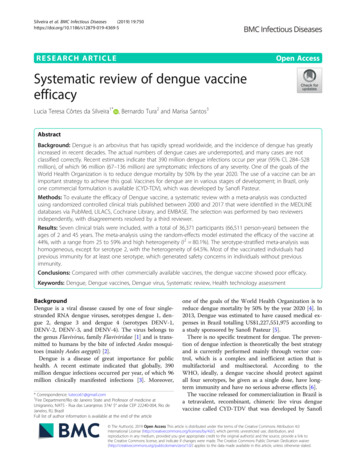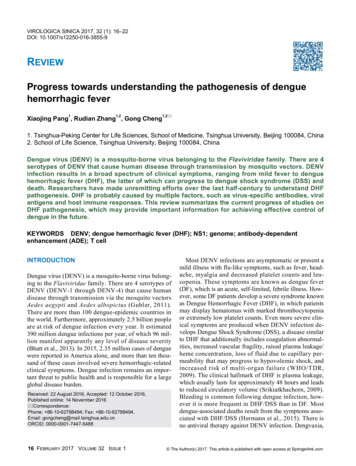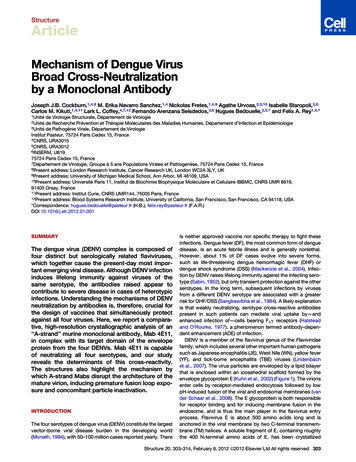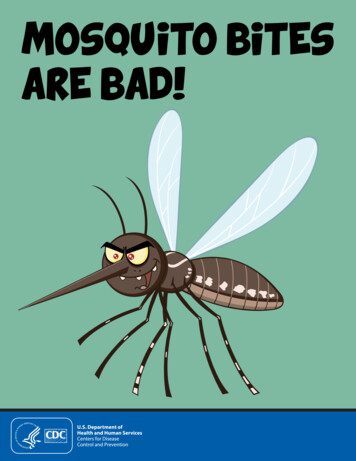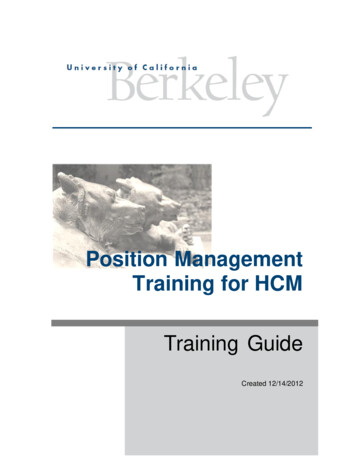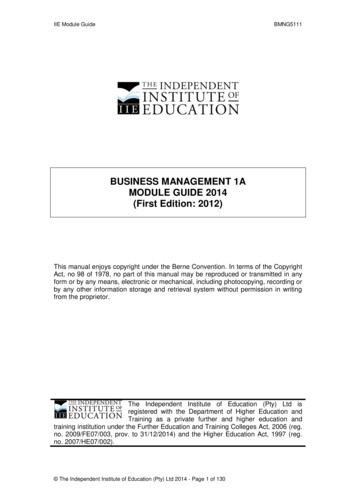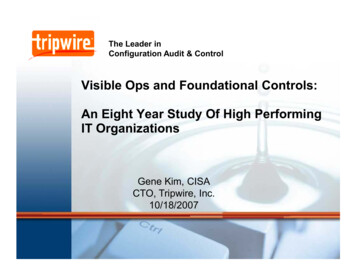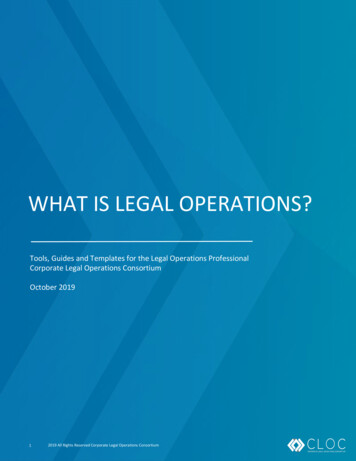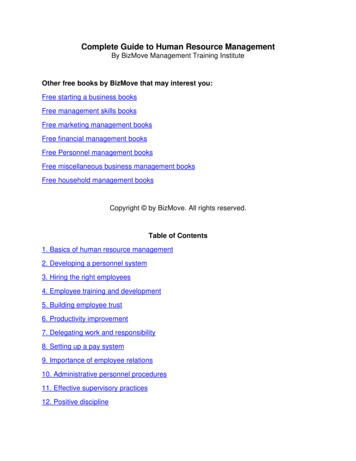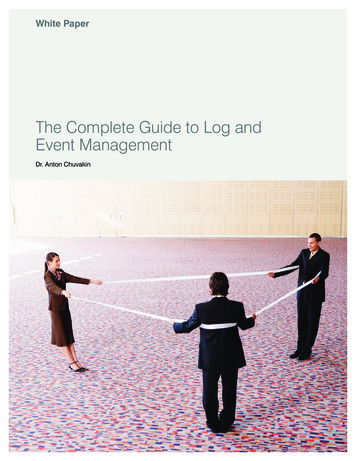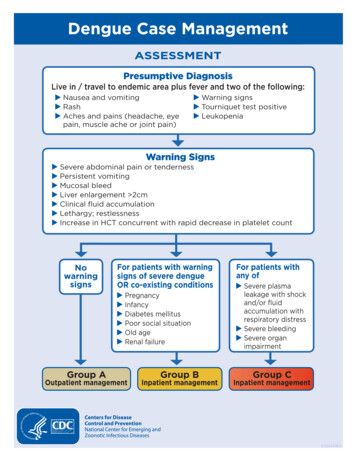
Transcription
Dengue Management DO’s and DON’TsON’T use corticosteroids. They are not indicated and can increase the risk of GIX D bleeding,hyperglycemia, and immunosuppression.give platelet transfusions for a low platelet count. Platelet transfusions doX D notON’Tdecrease the risk of severe bleeding and may instead lead to fluid overload andprolonged hospitalization.give half normal (0.45%) saline. Half normal saline should not be given, evenX D asON’Ta maintenance fluid, because it leaks into third spaces and may lead to worseningof ascites and pleural effusions.ON’T assume that IV fluids are necessary. First check if the patient can take fluidsX Dorally.Use only the minimum amount of IV fluid to keep the patient well-perfused.Decrease IV fluid rate as hemodynamic status improves or urine output increases.O tell outpatients when to return. Teach them about warning signs and their D timing,and the critical period that follows defervescence.O recognize the critical period. The critical period begins with defervescence and D lastsfor 24–48 hours. During this period, some patients may rapidly deteriorate.O closely monitor fluid intake and output, vital signs, and hematocrit levels. Ins D andouts should be measured at least every shift and vitals at least every 4 hours.Hematocrits should be measured every 6–12 hours at minimum during the critical period.O recognize and treat early shock. Early shock (also known as compensated or D normotensiveshock) is characterized by narrowing pulse pressure (systolic minusdiastolic BP approaching 20 mmHg), increasing heart rate, and delayed capillaryrefill or cool extremities.O administer colloids (such as albumin) for refractory shock. Patients who do not D respondto 2–3 boluses of isotonic saline should be given colloids instead of moresaline.O give PRBCs or whole blood for clinically significant bleeding. If hematocrit is D droppingwith unstable vital signs or significant bleeding is apparent, immediatelytransfuse blood.CS243318-C
Group AOutpatient ManagementDuring the febrile phase (may last 2–7 days) andsubsequent critical phase (1–2 days), your clinic shouldFollow CBCsWatch for dehydration Watch for warning signs, including decreasing platelet count and increasinghematocrit Watch for defervescence (indicating beginning of critical phase) Advise patient or their family to do the followingControl the fever ive acetaminophen every 6 hoursG(maximum 4 doses per day). Do notgive ibuprofen, aspirin, or aspirincontaining drugs. S ponge patient’s skin with tepidwater when temperature is high. Prevent dehydration which occurswhen a person loses too much fluid(from high fever, vomiting, or poor oralintake). Give plenty of fluids (not onlywater) and watch for signs ofdehydration. Bring patient to clinic oremergency room if any of the followingsigns develop: Decrease in urination (check numberof wet diapers or trips to the bathroom) F ew or no tears when child cries Dry mouth, tongue or lips Sunken eyes Listlessness, agitation, or confusion Fast heartbeat ( 100/min) C old or clammy fingers and toes Sunken fontanel in an infantPrevent spread of dengue withinyour house Place patient under bed net or havepatient use insect repellent whilefebrile to avoid infecting mosquitoesthat can infect others within 2 weeks. K ILL all mosquitoes in house. E mpty containers that carry wateron patio. Put screens on windows and doors toprevent mosquitoes from coming intohouse. Watch for warning signs astemperature declines 3 to 8 daysafter symptoms began. ReturnIMMEDIATELY to clinic or emergencydepartment if any of the followingwarning signs appear: Severe abdominal pain orpersistent vomiting Red spots/patches on skin Bleeding from nose or gums Vomiting blood Black, tarry stools Drowsiness or irritability Pale, cold, or clammy skin Difficulty breathingCS243318-C
Normal Vital SignsAgeEstimatedWeightNormalHeart RateRangeAverageHRNormalRespiratoryRate RangeHypotensionLevel(Systolic BP)1 month4 kg110-18014540-60 706 months8 kg110-17013525-40 7012 months10 kg110-17013522-30 722 years12 kg90-15012022-30 743 years14 kg75-13512022-30 764 years16 kg75-13511022-24 785 years18 kg65-13511020-24 806 years20 kg60-13010020-24 828 years26 kg60-13010018-24 8610 years32 kg60-1108516-22 9012 years42 kg60-1108516-22 9014 years50 kg60-1108514-22 9060-1008012-18 90 15 yearsHemodynamic mpensatedShockHypotensiveShockConsciouslevelClear and lucidClear and lucidRestless, combativeCapillary refillBrisk ( 2 sec)Prolonged ( 2 sec)Very prolonged, mottled skinExtremitiesWarm and pinkCool peripheriesCold, clammyPeripheralpulse volumeGood volumeWeak and threadyFeeble or absentHeart rateTachycardia for ageBloodpressureNormal heart ratefor age Normal bloodpressure for age Normal pulsepressure for ageSevere tachycardia orbradycardia in late shock Narrow pulse pressure( 20 mmHg) Hypotension Unrecordable bloodpressureRespiratoryrateNormal respiratoryrate for ageTachypneaHyperpnea or Kussmaul’sbreathing (metabolic acidosis)Urine outputNormalReducing trendOliguria or anuria Normal systolicpressure, but risingdiastolic pressure Narrowing pulsepressure Postural hypotensionCS243318-C
Ideal Body Weight Tables*Boys and GirlsAdult Males and les(kg)213125’(152 cm)5045314145’ 1”(155 cm)5248416165’ 2” (157 cm)5450518185’ 3” (160 cm)5752621205’ 4” (163 cm)5955723235’ 5” (165 cm)6157826265’ 6” (168 cm)6459929295’ 7” (170 cm)66621032335’ 8” (173 cm)68641136375’ 9” (175 cm)71661240425’ 10” (178 cm)73691345465’ 11” (180 cm)75711451496’(183 cm)78731556526’ 1”(185 cm)80751661541765551867561969571 kg 2.2 pounds*Use Ideal Body Weight to calculate IV fluid ratesin patients who weigh more than their Ideal BodyWeight (i.e. in overweight patients)CS243318-C
Blood pressure. Normal blood pressure for age Normal pulse pressure for age Normal systolic pressure, but rising diastolic pressure Narrowing pulse pressure Postural hypotension Narrow pulse pressure ( 20 mmHg) Hypotension Unrecordable blood pressure
